#Resident Ecosystem
Explore tagged Tumblr posts
Text
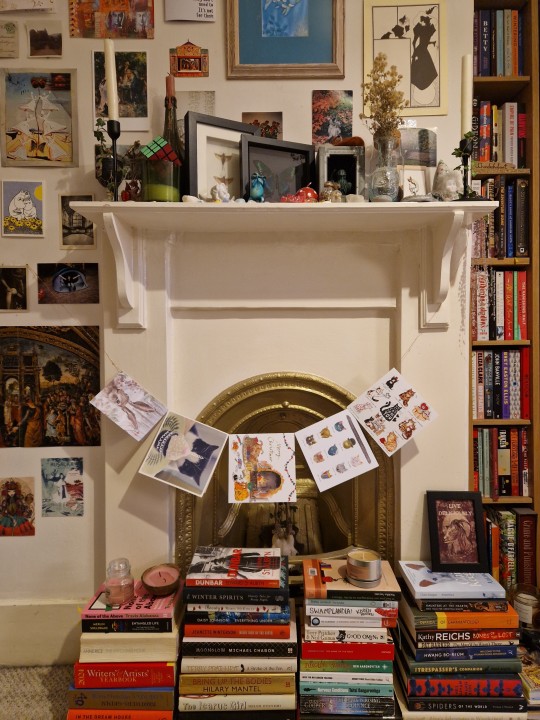

when i first moved in here this room was full of junk. now it's still full of junk, but in, like, a cool, aesthetic way.
(god help me when i move out and have to somehow pack all this stuff away again)
#i have! too many THINGS!#though tbh this is nothing compared to my old room at my parents' place (where most of my stuff still resides)#every surface is covered#every space that might be spare is taken up with cool rocks and jars of dead bugs and shells and dried flowers and animal bones#it's a complex ecosystem designed for the sole purpose of Collecting Dust#be shh now
229 notes
·
View notes
Text
i love when someone reblogs a xigpost from me and tags it with "xigbar" or "The Dark Freeshooter" <-or somesuch xigbar tag. and then when i go into the tag, a good ~25-50% of reblogs are of my posts. like i dont even think its because they like my posts i think its just because a good ~25-50% of posts that have been made about xigbar in the past year are my posts
#ive been like. Recognized in fandom spaces for my xigposting at this point#im The Xigbar Guy#poet laureate of da xigbar zone. scholar in residence at LuxU <-luxu university#who knows what will happen when 4 comes out. evidently they're aiming to bring in a new audience#and xigbar will be. a major character#im a moderate size fish in this teeny tiny pond#a pond that i project will grow in size#who knows how i will adapt as this ecosystem changes....#<-i think this is how luxord would talk if he fished instead of played poker#im tired. i should go to bed. goodnight#kh#blakeposts#xigbar meme tag
12 notes
·
View notes
Text
People need do start referencing the relevant post in their asks. If I got a ask that just said "salmon behaviour" I would NOT assume that's relevant to anything I've said, I'd take that as a request for facts about salmon behaviour
#theyre born in rivers and grow as they make their way out to sea#they live there for a while and then go back up the same river to mate!#there are many species of salmon they dont all completely get big and red when mating season comes#the disruption of north american waterways through dams has utterly wrecked the ecosystem of several areas#because salmon were SUCH a major food source for so many animals and humans#the.. snake river dam? i think? is one such project#the south resident orcas (they live around southern BC and northern washington state) used to eat salmon as their dietary staple#and now theyre all dying off from starvation#because different orca populations eat different things. they have culture. and that group doesnt know how to hunt eg mammals or sharks.#just fish.
4 notes
·
View notes
Text
This is huge.
If you aren't following the news here in the Pacific Northwest, this is a very, very big deal. Our native salmon numbers have been plummeting over the past century and change. First it was due to overfishing by commercial canneries, then the dams went in and slowed the rivers down and blocked the salmons' migratory paths. More recently climate change is warming the water even more than the slower river flows have, and salmon can easily die of overheating in temperatures we would consider comfortable.
Removing the dams will allow the Klamath River and its tributaries to return to their natural states, making them more hospitable to salmon and other native wildlife (the reservoirs created by the dams were full of non-native fish stocked there over the years.) Not only will this help the salmon thrive, but it makes the entire ecosystem in the region more resilient. The nutrients that salmon bring back from their years in the ocean, stored within their flesh and bones, works its way through the surrounding forest and can be traced in plants several miles from the river.
This is also a victory for the Yurok, Karuk, and other indigenous people who have relied on the Klamath for many generations. The salmon aren't just a crucial source of food, but also deeply ingrained in indigenous cultures. It's a small step toward righting one of the many wrongs that indigenous people in the Americas have suffered for centuries.
#conservation#salmon#dam removal#fish#animals#wildlife#klamath river#indigenous#ecosystems#southern resident killer whales#killer whales#orcas
19K notes
·
View notes
Text
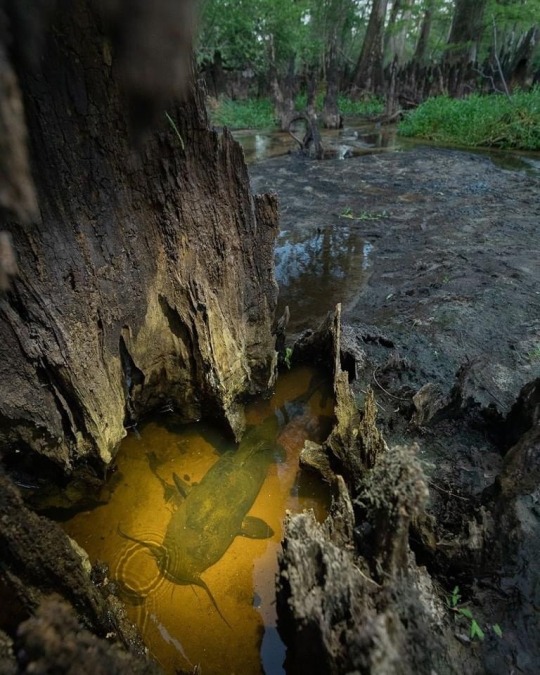
The "Dad of the Year" award goes to this flathead catfish on the Black River in North Carolina. A sudden drop in water level caused the fish to be stranded at the base of a rotting tree. I wondered why it didn't leave as the water receded-until I saw the pile of pink eggs by its tail. I realized the fish was trapped by staying to care for its offspring.
It's common for males to watch over eggs and defend them from potential predators-and, in some cases, even from the mother. Of all the things I've seen in swamps, this was one of the most striking examples of survival.
Cypress swamps are difficult places to thrive. Seasonal fluctuations of water shape these ecosystems and the residents that call them home. Although I didn't stick around to see what happened to this father, I was encouraged to see that the water levels did come up just a few days later.
23K notes
·
View notes
Text








Wally Dion, born 1976, Saskatoon, Saskatchewan.
Fabric Star Quilts.
Wally (Walter) Dion is a Canadian artist of Saulteaux ancestry living and working in Upstate New York. Working in a number of media including painting, drawing and sculpture.
Wally explains:
"The first fabric star quilt was made as part of a 2022 residency at Wanuskewin Park. It was my way of reflecting upon prairie tall grass and the reintroduction of bison into the Great Plaines. I wanted to make several transparent quilts and superimpose them; one in front another... a quilt for the microbiome, another for the bison, their manure & hooves, another for the summer fires that scorch the ground and a final quilt for the sweetgrass braid.
I was considering how all of these things worked together for thousands of years to create what is known as the 'prairie tall grass ecosystem'. A vast and fertile expanse of land stretching from the foothills of Alberta to the banks of the Mississippi. I wanted to highlight the invisibility of systems when everything is working well, as it should be.
I started with the green quilt because it is the colour of the sweet grass braid that is exchanged in ceremony and relationship building. I considered the nature and tradition of quilting; impoverished craftspeople using tiny scraps of fabric. I considered the act of offering fabric and adherence to tradition. I thought of a thousand tiny prayers and how that might look; invisible acts of respect and adherence to protocols spanning decades. My thoughts travelled across the land, imagining the trees and rocks collecting these prayers like a bush of cloth, or an etched boulders."
15K notes
·
View notes
Text
Remembering Rosa the sea otter
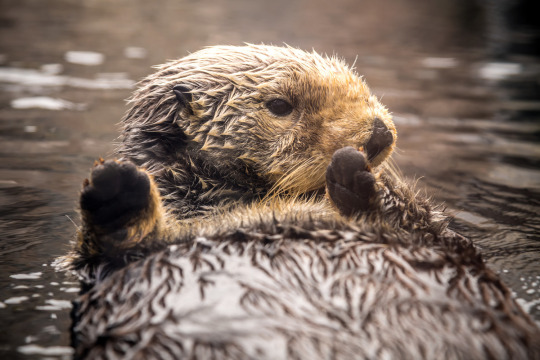
Hello Aquarium family. It’s with great sadness that we share that our beloved sea otter Rosa passed away today. At 24 years old, Rosa was the oldest resident otter at the Aquarium and one of our most experienced surrogate moms, having raised 15 stranded sea otter pups in her time with us.
While Rosa spent the last few months behind the scenes getting extra special care from our staff, she was the matriarch of the Sea Otters exhibit. Beloved and cherished by millions of visitors and fans of the live Sea Otter Cam, she was instantly recognizable thanks to her blonde head (eclipsed only by Ivy as our most grizzled of kelp grizzlies) and her signature head-all-the-way-back swimming style.
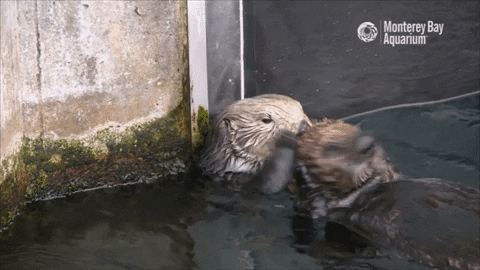
“Rosa was one of our most playful sea otters, and even at 24 years old, she would still be seen frolicking and wrestling with the younger otters when she instigated it,” said Melanie Oerter, curator of mammals. “Rosa was usually found sleeping against the window while on exhibit with her chin tucked tight into her chest and her tail swishing back and forth.”
After being found stranded as a four-week-old pup in September 1999, Rosa became part of the Aquarium family before our sea otter surrogacy program even took shape. Our Sea Otter Program staff raised her by hand for nearly seven months before releasing her to the wild.

Rosa eventually returned to the Aquarium once again in March 2002 when she didn’t take to life outside of human care, and she immediately became a fixture in the formative years of our sea otter surrogacy program as a caring adoptive mother for rescued pups destined for wild release.
She was a delight to work with, though she certainly had her expectations of our staff according to the many Sea Otter Mammalogists who trained (were trained by?) Rosa over the years.

"Rosa was an incredibly smart otter! Generally calm and patient with the staff. However, she could be defiant at times and there would be no convincing her to do something she did not want to do," said Oerter. "She would often just look at us or swim away. I believe she was the one who was really training us all of these years. I certainly learned a lot from working with such an incredible otter. It has been a privilege and to say we will miss her is understated."
Rosa relaxed into retirement from surrogacy in 2019, acting as a companion and cornerstone in the ever-changing raft of otters in our care.
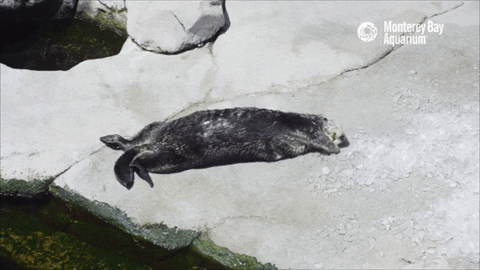
Wild female sea otters live between 15 and 20 years, and reaching the age of 24 is a testament to the exceptional care Rosa received throughout her life from our Veterinary and Animal Care teams. In recent years, she began showing signs of age-related health concerns. In the last few weeks, her health had been deteriorating. After an exam, the veterinary and animal care teams made the difficult choice to humanely euthanize Rosa because those health conditions were compromising her quality of life. She passed away peacefully, surrounded by her caretakers.
Rosa’s legacy lives on both at the Aquarium with our other resident sea otters Kit, Selka, Ivy, and Ruby, and in the wild, where sea otter pups she raised continue to raise pups of their own, contributing to the recovery of their species and their ecosystems along the California coast.
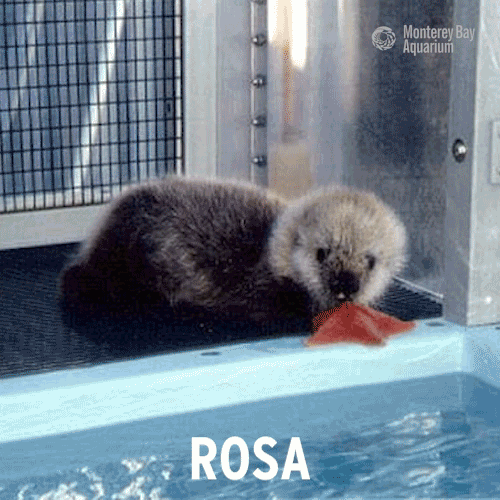
Rosa was an inspiration to millions as a charismatic ambassador for her threatened species while playing a leading role in the story of sea otter recovery from near-extinction during the fur trade. Rosa will be greatly missed by all of us who got to know her over the years.
To celebrate Rosa’s long life, please feel free to share photos and stories of your encounters with Rosa at the Aquarium in the comment section on this post, in her memory and for the staff and volunteers grieving her loss. Thank you all for being such a big part of Rosa’s life. 🦦♥️
youtube
7K notes
·
View notes
Text
As a Californian I signed dozens of petitions for this over the years. It’s so good to see something like this finally realized, it gives me hope for the Snake river as well.
#indigenous#indigenous rights#klamath river#salmon#southern resident killer whales#good news#environment#ecosystems
1K notes
·
View notes
Text
"The Lower Ninth Ward of New Orleans has recently witnessed an incredible eco-renaissance following decades of damage and neglect.
Led by a local community development group, a 40-acre wetlands park has been restored to glories past with hundreds of local trees that attract over a hundred species of birds, plus joggers, picnickers, and nature lovers besides.
The story begins with Rashida Ferdinand, founder of Sankofa Community Development Corporation (CDC). Growing up in this historic part of New Orleans, where Black homeownership thrived, where Fats Domino was born, and where locals routinely went out into the wetlands to catch fish and crustaceans, she watched as it suffered from years of neglect.
Poor drainage, ruined roads, illegal trash dumping, and unmitigated damage from hurricanes slowly wasted the wetland away until it was a derelict eyesore.
In the name of restoring this wild heritage indicative of the culture in the Lower Ninth, and in order to protect her communities from flooding, Ferdinand founded the Sankofa CDC, and in 2014 entered into an agreement with the City of New Orleans for the restoration of Sankofa—a 40-acre section of neglected wetlands in the heart of the Lower Ninth.
The loss of Sankofa’s potential to dampen flooding from storms meant that over the years dozens of houses and properties were flooded and damaged beyond the ability of the inhabitants to recover. Forced out by a combination of nature’s fury and government failure, the cultural heritage of the community was receding along with the floodwaters.
Ferdinand knew that restoring natural flood barriers like Sankofa was key to protecting her community.
“Hurricane protection is a major concern in the community, but there’s a lack of trust in the infrastructure systems that are supposed to protect us,” Ferdinand told the Audubon Society.
Today, Sankofa Wetlands Park is a sight to behold. Hiking trails snake through a smattering of ponds and creeks, where bald cypresses and water tupelo trees continue to grow and cling to the ground even during storms. Picnic benches have appeared, wheelchair-accessible trails connect sections of the park to parts of the Lower Ninth, and local businesses are seeing more visitors.
It needed a lot of work though. Thousands of invasive tallow trees had to be uprooted. 27,000 cubic meters of illegally dumped trash compacted into the dirt had to be removed. A 60-year-old canal dug by the US Army Corps of Engineers had to be disconnected, and all new native flora had to be planted by hand.
Audubon says that Ferdinand routinely can’t believe her eyes when she looks at the transformation of Sankofa into its current state.
“Seeing butterflies, birds, and other pollinators in the park is a sign of a healthy ecosystem,” she says. “All we had to do was create the right conditions.”
Slated for official completion in 2025 with an outdoor amphitheater, interpretive signage, and additional trails, Ferdinand and the CDC have their eyes set on an even larger area of wetlands to the north of Sankofa.
Along the way, Ferdinand and the CDC attracted many helping hands, and entered into many partnerships, But the catalyst for change arose from the spirit and determination of one woman in the right place at the right time, for the benefit of hundreds in this historic heart of a historic city."
-via Good News Network, September 17, 2024
#new orleans#louisiana#nola#united states#wildlife#wetlands#ecology#ecological restoration#conservation#good news#hope
3K notes
·
View notes
Text
Saskatoon Receives Funding for Green Infrastructure: A Step Towards a Sustainable Future
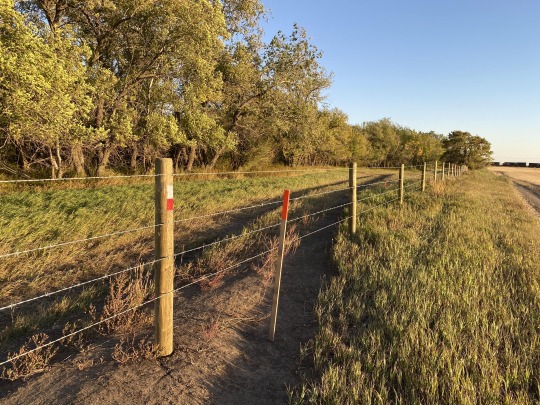
View On WordPress
#@FriendsAreas#awarness#Ecosystem#environment#Friends of the Saskatoon Afforestation Areas#funding#George Genereux Urban REgional Park#GREEN INFRASTRUCTURE#green spaces#heritage#maintenance#National Infrastructure Strategy#Nature#residents#Richard St. Barbe Baker#Richard St. Barbe Baker AFforestation ARea#Saskatchewan#Saskatoon#stakeholders#sustainability#urban environment#wildlife
0 notes
Text
People hating outdoor cats is such a city people thing. Have you ever heard of a ranch or a barn
#so many farmers and rural people keep cats and they live outdoors and theyre fed on a regular basis but their JOB is to hunt mice and other#pests that would reside in hay lofts and near chicken coops and in piles of firewood#'cats are evil destroy ecosystems' etc bro. we are evil WE did that so we are making do okay#jay jabbers#cats#cat
1 note
·
View note
Text
I am becoming a palaeontologist because it reminds me to honour the lonely little quiet kid who believed in destiny. That kid also swore an oath to make "I love Velociraptor" their dying words and I can't break that promise, it'll break their heart.
Paleontologist: I became a paleontologist because dinosaurs are cool
Astronomer: I became an astronomer because space is cool
Chemist: I became a chemist because explosions are cool
Archeologist: I became an archeologist because Indiana Jones is cool
Mycologist: I. Fucking. LOVE. Mushrooms.
Paleontologist: Uh…
Mycologist: IWillLiterallyMurderYouJustSoICanWatchFungiBreakDownYourDecayingRemainsDon’tTestMeBoneBoy
#Also to learn how ecosystems collapse so we can stop our current crisis. That too.#Science#mycologist#physics#paleontology#my autism is also severe and will get me through dealing with these oysters.#palaeontology#chemistry#also from personal experiance the mycology thing is true#my first science lecturer was the small town uni's resident Macro Mycologist and she was best friends with the resident Micro Mycologist.#mycology#Archeologist
5K notes
·
View notes
Text
Honoring the Spirits of Home: Creating Sacred Spaces for the Unseen
Welcome back, Seekers! Within my local coven, we are journeying through the mysteries of Spirit until Winter Solstice. Today, I introduced the art of crafting Spirit Houses, and I thought it would be fitting to share a bit of that here. I like to keep these crafty posts simple and open-ended, leaving space for the practitioner to add their own touch. The best magick often arises from just diving in and letting your intuition guide the way. May this inspire you to connect, create, and explore! 🌙✨
As witches, we work with spirits every day, whether we realize it or not. Our homes, like ourselves, are steeped in the spirit world, alive with layers of unseen inhabitants that have their own roles, wisdom, and stories to tell. For many of us, it’s a quiet understanding that a witch’s home should be haunted—not in the fearful sense, but filled with life that pulses in harmony with our craft. From ancestral guides and house spirits, to the land’s ancient beings, these entities weave themselves into the very fabric of our spaces, enriching them with energy and presence.
Regardless of whether a home is newly built or weathered by decades, each dwelling becomes imbued with spirit. There’s an existing ecosystem of energies that connect to the land itself, the history of the area, and the layers of life that once lived or passed through. These spirits, sometimes subtle, sometimes profound, thrive within the space we call home, coexisting with us and enhancing our magick. But it is up to us to nurture a balanced and harmonious relationship with them.
Why Connect with the Spirits of Your Home?
Developing a deep, reciprocal relationship with the spirits of your home doesn’t just benefit your craft; it offers blessings for everyone under your roof. When these spirits feel acknowledged and respected, they offer protection, lend strength to your magickal workings, and create an atmosphere of peace and nourishment. A home can truly feel like a sanctuary when the spirits that dwell within it are in harmony with those who reside there in the flesh. This connection turns your space into an anchor—a place of personal power, healing, and resilience.
Building Friendships with Spirit
Nurturing relationships with spirits requires time, care, and a commitment to reciprocity. Just as with human friendships, there is a cycle of giving and receiving. Spirits respond to sincere attention and intention, as well as the gifts and gestures we offer them. One meaningful way to foster this connection is by creating a spirit house or a dedicated space where spirits can feel welcomed and honored.
A spirit house is both a physical symbol and a spiritual anchor. It becomes a place where offerings can be left, and it serves as a gateway for interaction with the spirit world in a respectful and clear manner. It’s a way of saying, “You are welcome here, I honor your presence, and I seek your guidance and protection.”
Creating Your Spirit House
Designing a spirit house is a creative, personal process. It need not be elaborate; sometimes, the simplest gestures carry the deepest respect. You may choose a small altar, a shelf, or even a discreet box placed in a peaceful corner of your home. Consider using natural materials—wood, clay, or stone—as they tend to resonate well with spirits of place. Personalize it with items like stones from your land, soil, dried herbs, or even water from a local stream. Each addition builds a bridge between your energy and the spirits you invite into your home.
When crafting your spirit house, remember that offerings and gifts can strengthen this relationship over time. Spirits, like friends, appreciate time, energy, love, and tokens of appreciation. Remember, spirits are aware of intention as much as they are of the physical offering, so approach this creative expression with reverence and sincerity.
For my spirit house, I’ve chosen to weave in unsea, or “old man’s beard,” gathered lovingly from my mother tree, a sacred link to the ancient and wise energies of the land. I've placed birds within the space, their forms standing as messengers and symbols of spirit, guiding and connecting with the unseen. Mushrooms, too, find their place here, embodying my bond with the natural world—grounded yet reaching into hidden realms. They carry the magick of spiritual growth, reminding me of the mystery and connection to realms beyond. Each piece breathes life into the space, deepening my relationship with the spirits I honor… and I placed a bell at the entrance, placed with the hope of hearing it softly chime as the spirits pass through.

#traditional witchcraft#witchcraft#witch#magick#witchblr#folk witchcraft#folk magic#spirit work#witches#spirit house#house spirits#tradcraft
659 notes
·
View notes
Text
Random concept I came up with last night:
The Great Wreck
Legends say that a long time ago two sea captions were on an accidental collision course in the middle of the sea. Both of them were too stubborn and prideful to turn around, expecting the other person to move. They sped up in a deadly game of chicken until their ships collided. But instead of sinking into the sea, the two wrecks fused into a floating mangled wreck.
The wreck was cursed, and over the millennia it attracted many arrogant and foolish captains, gaining more and more ships into its ever expanding area. In the present, it became a site favored by pirate, prospectors and treasure hunters, plumbing the labyrinthian mangled decks for whatever they can find. Some outlaws even made a home in the great wreck, taking residences in old captain quarters or building a new home out of loose planks.
Bonus facts:
The Great wreck is about 18km in radius (about 1000 km^2 in area).
There's an entire ecosystem of sea creatures living underneath and inside the wreck, so watch out!
I imagined this location as the setting for the first arc in a One Piece-inspired sea adventures story.
The main character is a tomboyish adventurous girl.
She meets a squatter who's been stuck in the wreck for years. He built a new ship out of parts of other ships.
She helps him take it out of the wreck and off on adventure they go.
They take some ancient shipwreck treasures with them of course.
841 notes
·
View notes
Text
I'm bored of elemental giants. Use environmental giants instead.
Environmental Giants all start out the same, but their bodies take up the features of the place they live in. They become a reflection of their domain.
Giant takes up residence in the cliffs of dover? Not a stone giant. No, that's specifically The Giant of Dover. Its body is made of chalk. It can create dust clouds of chalk with its breath, its shoulders are padded with tufts of short grasses and blackberry bushes.
Giant takes up residence in the ruins of a highway during an apocalypse? That's the I-95 Giant. It has rebar spines along its back, skin of pavement and concrete, and wears wrecked cars as armor.
And to make this idea more dynamic, the giant's form changes as the ecosystem changes. A river gets diverted away from a Giant's domain? Then the Giant dries up along with its land. Now the Giant has an incentive to protect its dominion, and a weakness that its enemies can exploit.
#game design#indie rpg#ttrpg#indie games#rpg#rpgs#indie ttrpg#dnd#tabletop rpgs#worldbuilding#writing#magic system
838 notes
·
View notes
Text
....we don't talk about the Guildmarm
im not versed in monhun lore at all but i like that youre just fighting dinos in the woods while other things are going on
#Also the balance of quest reasons largely depends on the game#and you'll see patterns in who the questgivers are#city folk are more likely to just want a trophy#Research Commission nearly always has the wellbeing of the ecosystem and science in mind#most villages only want monsters dead with good reason#and are often friendly towards their resident monsters (which your hunts often keep safe)#but bumfuck nowhere villages can be scared shitless on principle
318 notes
·
View notes